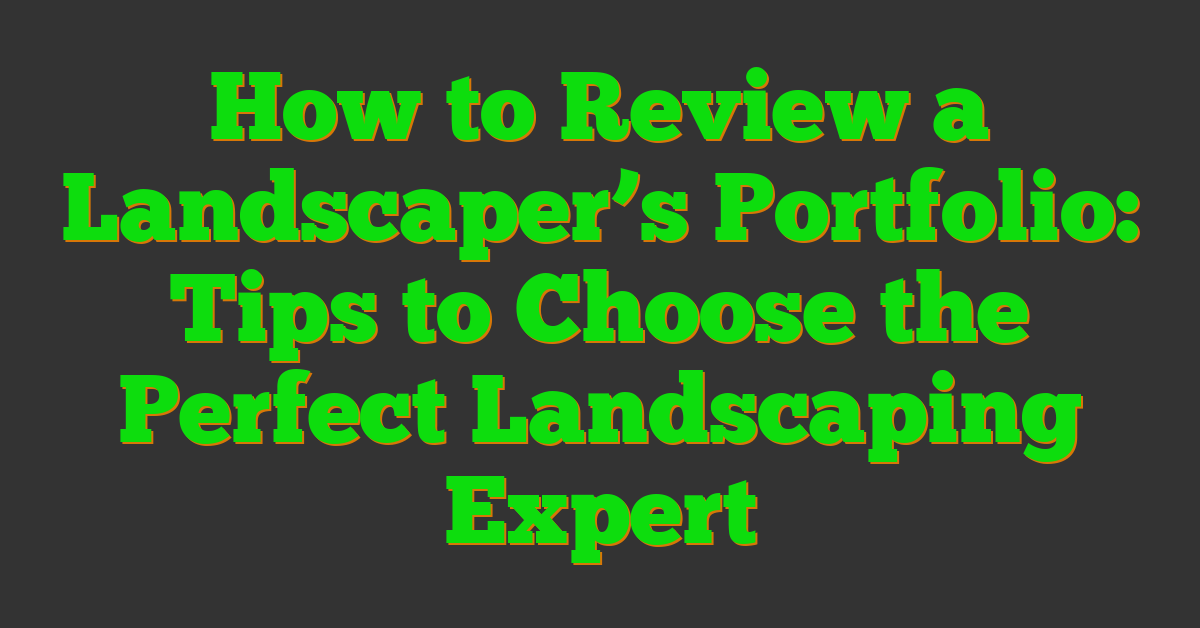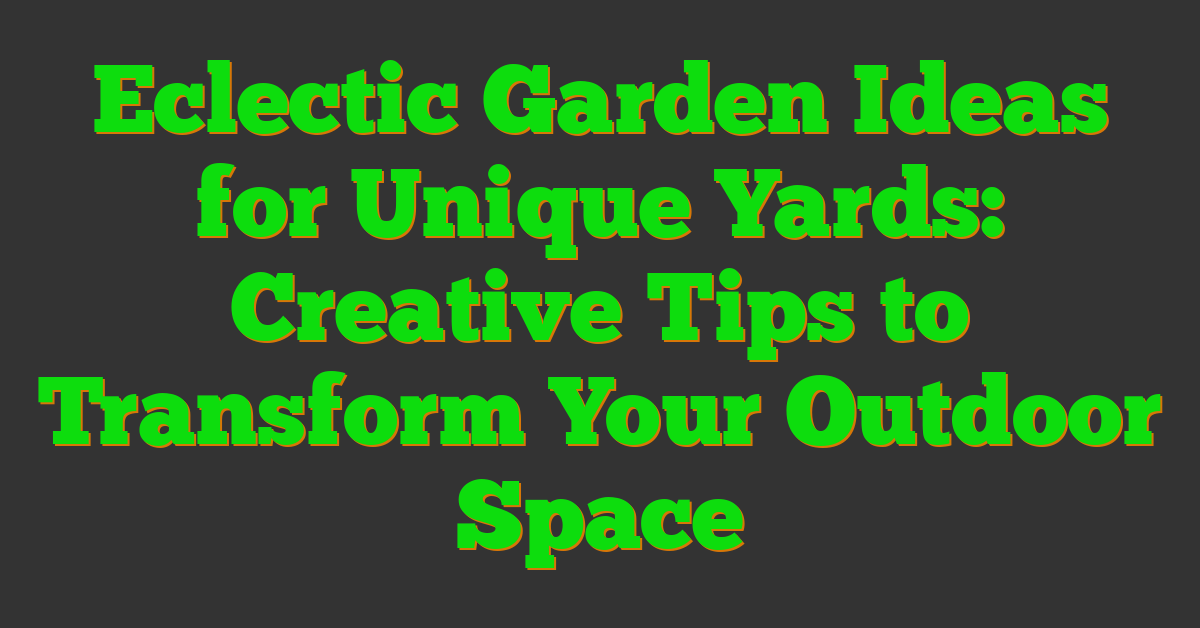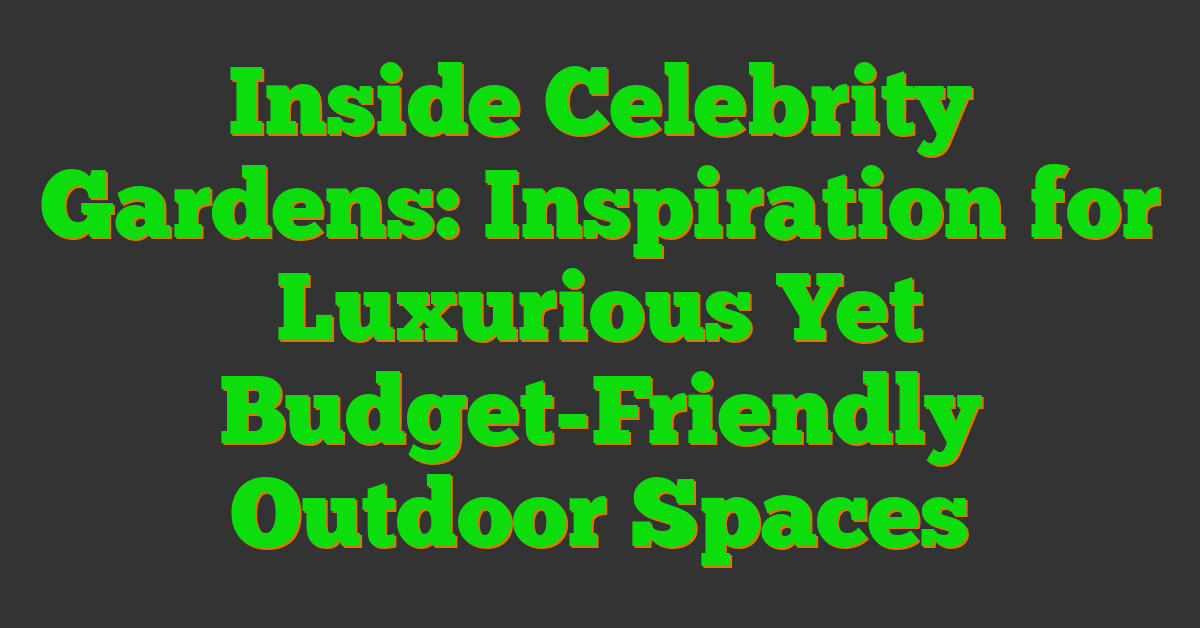When it comes to small outdoor spaces, it’s easy to feel limited by size. But I’ve learned that with the right landscape design, even the tiniest yards can feel functional, inviting, and surprisingly spacious. It’s all about working smarter, not harder, to make every square foot count.

By combining clever layouts, multi-purpose features, and thoughtful plant choices, you can transform a cramped area into a stunning retreat. Whether it’s a cozy patio, a vertical garden, or creative storage solutions, smart design turns small spaces into big opportunities.
Understanding the Challenges of Small Spaces
Designing for small spaces involves unique constraints. Limited square footage restricts layout options, making efficient planning essential. Narrow spaces, such as side yards, pose difficulties in fitting standard features like seating areas or pathways.
Privacy concerns often arise with smaller spaces. Proximity to neighbors or shared boundaries reduces seclusion, requiring creative solutions like vertical screens or layered planting to create a sense of enclosure.
Storage is another challenge. Without adequate planning, essential tools or furniture items may clutter the area, detracting from its functionality and appearance.
Creating visual depth is harder in compact areas. Smaller dimensions make it easy for spaces to feel cramped, emphasizing the importance of strategic elements like perspective and scaling.
Environmental factors can further complicate small-space design. Shade from surrounding structures, poor soil quality, or limited drainage options may restrict planting choices or add extra maintenance demands.
Principles of Smart Landscape Design
Smart landscape design transforms small spaces into practical and visually appealing areas. Key principles like functionality, aesthetics, balance, and proportion ensure every element serves a purpose while enhancing the overall look.
Functionality and Aesthetics
Every design choice fulfills both a practical and aesthetic goal. Compact furniture, like foldable chairs or built-in benches, conserves space while maintaining usability. Decorative elements, such as vertical gardens or mosaic pathways, add character without overwhelming the area. Multipurpose features, like planters doubling as privacy screens, optimize the layout further. Proper lighting, including string lights or LED fixtures, ensures usability during evening hours while creating ambiance.
Balance and Proportion
Proportional layout enhances flow and minimizes visual clutter. I use scaled-down features, such as petite seating sets or smaller planters, to match the space size. Creating visual balance might involve grouping elements symmetrically or using asymmetrical arrangements for interest. Layered planting, combining low ground covers, mid-height shrubs, and tall plants, builds depth without overcrowding. I also position accents, like sculptures or water features, at focal points to direct attention and unify the design.
Creative Solutions for Small Space Landscaping
Maximizing small spaces requires innovative approaches that combine functionality and aesthetics. I focus on techniques that utilize vertical areas, adaptable furniture, and design elements that create spatial illusions.
Vertical Gardening Techniques
Vertical gardening transforms walls and fences into lush green spaces. I recommend using trellises, wall planters, and pocket gardens to grow flowers, herbs, or even vegetables. For more flexibility, modular systems let you rearrange plants as needed. Plants like creeping fig or trailing ivy thrive in these setups and add immediate visual interest. Incorporating blooming flowers in vertical arrangements also enhances color variety without consuming floor space.
Multipurpose Furniture and Fixtures
Furniture with multiple functions enhances utility in small landscapes. I often choose benches with built-in storage, foldable tables, or modular seating that adapts for different activities. A bench doubling as a planter box or storage unit for gardening tools optimizes space while maintaining a cohesive design. For patios, compact fire pits with table extensions combine ambiance with functionality, making small areas work harder.
Using Mirrors and Lighting for Illusion
Mirrors create an impression of depth, making confined spaces look larger. I recommend placing mirrors on walls or fences but framing them with plants for a natural blend. For lighting, LED string lights, solar-powered fixtures, or wall-mounted sconces enhance usability after dark. I strategically place uplights beneath plants or decorative features to elongate their appearance and draw the eye upward, emphasizing height and openness.
Selecting the Right Plants for Compact Areas
Smart plant choices can make small spaces feel larger and more functional. Selecting plants that align with space, maintenance, and aesthetic requirements is essential for optimal results.
Low-Maintenance Plant Options
Low-maintenance plants save time in upkeep and thrive in compact environments. Succulents like sedum and echeveria fit well in smaller pots and require minimal watering. Dwarf varieties of shrubs, such as boxwood (under 3 feet tall), retain structure and provide greenery year-round without outgrowing their allotted space. Perennials like lavender and ornamental grasses such as carex add texture and require only occasional trimming. When choosing, prioritize drought-resistant or pest-tolerant species if environmental conditions pose challenges.
Companion Planting Strategies
Companion planting enhances plant health and maximizes space in small garden beds or containers. Utilize plants with complementary needs, such as combining herbs like basil and tomatoes to encourage mutual growth. Pair shade-tolerant ground covers like ajuga under taller plants or shrubs to optimize vertical layers without overcrowding. Group plants with similar water and light preferences, such as pairing thyme and oregano, to reduce maintenance and ensure thriving clusters. Favor diversity in these combinations to create visual interest while maintaining functional synergy.
Tips for Sustainable and Eco-Friendly Design
Smart landscape design for small spaces involves integrating sustainable practices to conserve resources and reduce environmental impact. These methods create greener, more efficient outdoor areas while supporting functionality.
Water Conservation Practices
I focus on managing water use to maintain eco-friendly landscapes. Drip irrigation systems, for example, deliver water directly to plant roots, reducing waste. Rain barrels or cisterns effectively collect and store rainwater for later use, minimizing dependence on municipal supplies.
« Planning a Landscape with Rain Gardens: A Sustainable Guide to Beauty and Stormwater Control Creating a Garden Room: Indoor-Outdoor Living Tips for a Tranquil and Functional Space »
Drought-tolerant plants, like lavender and sedum, lower water consumption while providing visual appeal. Mulching around plant bases helps retain soil moisture and regulate temperature, creating optimal growing conditions while limiting evaporation. Grouping plants with similar watering needs ensures efficient irrigation and healthier growth.
Incorporating Recycled Materials
Using recycled materials enhances sustainability in small-space designs. Reclaimed wood, for example, can be crafted into planters, benches, or pathways, reducing demand for new resources. Salvaged bricks or stones serve as durable edging or paving components that add character to compact landscapes.
Repurposed containers, such as old metal tubs or ceramic pots, make creative planters, giving discarded items new life. I also incorporate recycled composite decking for patio surfaces, combining aesthetics with eco-conscious practicality. Incorporating upcycled elements reduces environmental impact while adding a unique charm to the space.
Conclusion
Maximizing a small outdoor space is all about creativity and intentional design. With the right strategies, even the most compact areas can become functional, inviting, and visually stunning. By focusing on smart layouts, adaptable features, and sustainable practices, it’s possible to transform limited square footage into a personal retreat that reflects your style and meets your needs.
Small spaces don’t have to feel restrictive. With thoughtful planning and innovative solutions, you can create an outdoor haven that’s both practical and beautiful. Whether it’s through vertical gardens, clever storage, or strategic lighting, every detail plays a role in making the most of what you have.
















